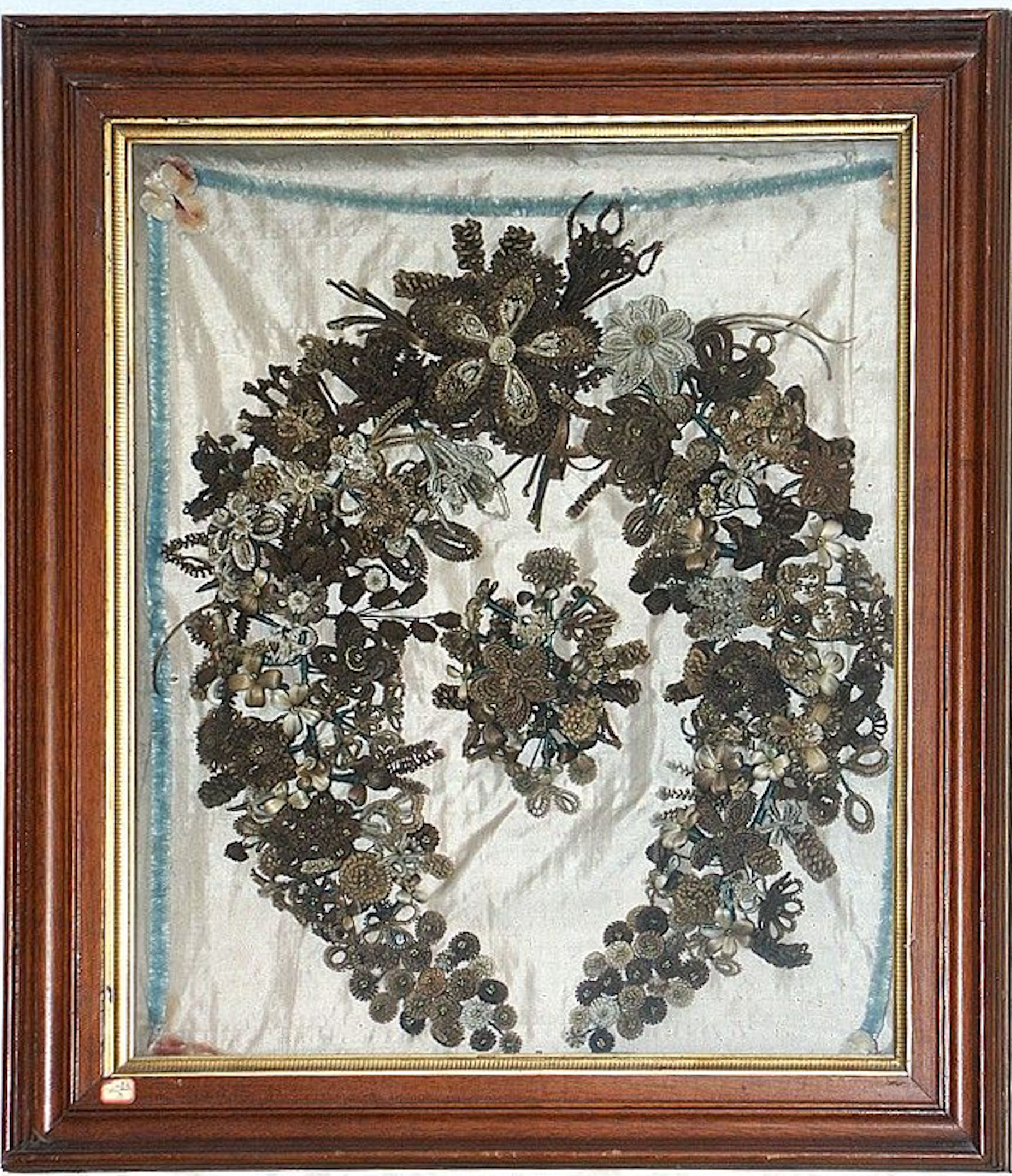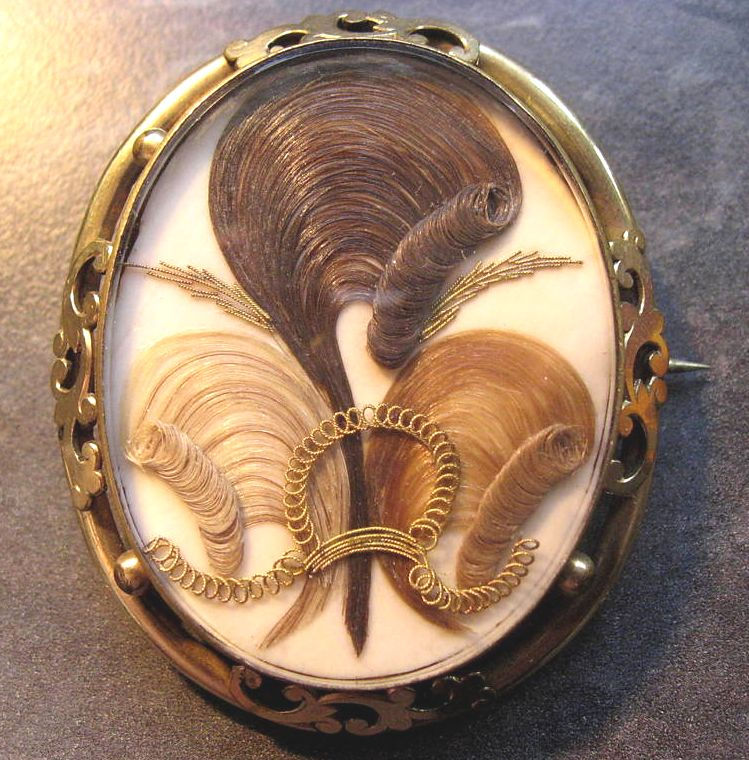The Hair Wreath
by Bill Schuette
Sauk Co Historical Society Hair Wreath
During the Victorian Era (1837-1901) European and North American women spent much of their day in the home. To pass the time, they indulged in “fancy work”, which they could display for their friends and neighbors and to decorate their otherwise mundane homes. One form of this fancy work consisted of making ornate creations from hair, similar to the older custom of placing a lock of hair of a loved one in a locket. Wreaths, lockets, bracelets, earrings and even toothpick holders would be fashioned out of hair. Women’s magazines depicted different patterns that could be used for these creations.
Back in the day, many women had long flowing hair, so there was a plentiful supply of raw material to work with. The tresses were woven around thin wire and formed into delicate designs of flowers, floral sprigs and leaves. Wooden or glass beads, buttons, and sometimes, seeds, were also included in the final product. Wreaths could be formed into horseshoe-shapes, a Victorian symbol of good luck, with the open end facing up to catch the luck. The resultant wreath was mounted on a silk or velvet background and placed in a fancy shadow box frame. Many of the wreaths extended to 18 inches or more in diameter.
Mourning Broach made from hair
Locks were commonly taken from family members or friends to be woven into the design, as a remembrance, since photographs were rare or nonexistent then. Horse hair was sometimes used to fill out a design. Women could also purchase strands of hair from catalogs or local stores. Locks of blond, black, brown or red hair would be carefully woven into the design. A sign or note was placed inside the frame to indicate the name or names of the persons being memorialized.
Hair receivers or keepers were fancy porcelain containers used to save the fallen or clipped locks of individuals and were usually identified as a jar with a hole in the cover to insert strands of hair.
Originally, hair wreaths were made from the hair of deceased loved ones as an honor and remembrance, and the strands placed at the center. As another family member died, their hair would be placed into the center, and the previous lock would be moved to the outside. Hair wreaths with the deceased’s hair would usually be displayed with the open end up towards heaven. The usual mourning period would be one year. Smaller broach-sized wreaths were often woven from the deceased’s locks, and warn during the mourning period.
Eventually hair wreaths were created for sentimental reasons, and given as gifts to friends and loved ones as keepsakes.
Young girls made scrapbooks which included the locks of schoolmates. Valentines were also created with a few strands of the givers hair inside as a token of affection. Autograph books sometimes included a small wreath produced from the signer’s hair.
Queen Victoria presented her children and grandchildren with jewelry made from her hair and Napoleon had a watch chain made from his wife’s hair.
Even today, parents often save a lock of hair from their baby’s first haircut.
Hair wreaths can sell for hundreds or even thousands of dollars, depending upon how elaborate the design.
The Sauk County Historical Society has an intricate hair wreath, donated in 1950, on display. It was made by Modora Todd Premo around 1861.



